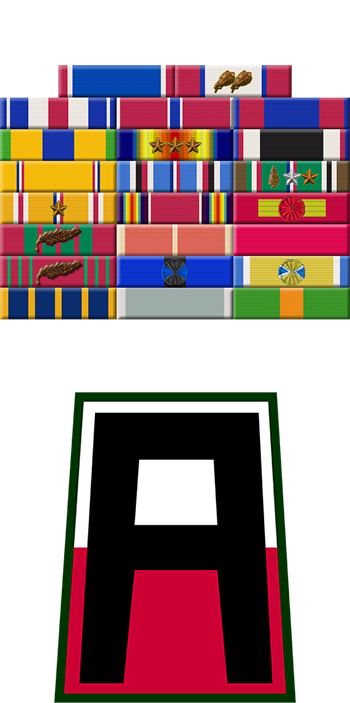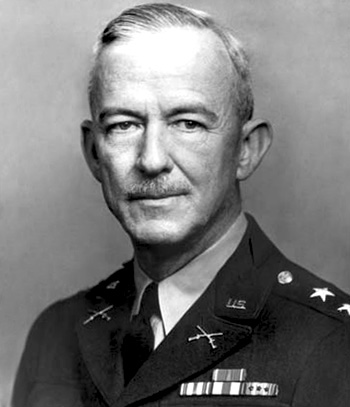
|
Courtney H. Hodges |
 |
|||
| Rank, Service | ||||
General O-10, U.S. Army |
||||
| Veteran of: | ||||
|
||||
| Tribute: | ||||
Courtney Hodges was born on January 5, 1887, in Perry, Georgia. He entered the U.S. Military Academy at West Point on June 16, 1904, but resigned on June 17, 1905. He then enlisted in the U.S. Army on November 5, 1906, and served with Company L of the 17th Infantry Regiment at Fort McPherson, Georgia, from November 1906 until he was commissioned a 2d Lt of Infantry on November 20, 1909. Capt Hodges served with the 13th Infantry Regiment at Fort Leavenworth, Kansas, at Fort Sam Houston, Texas, and in the Philippines (from September 1911 to October 1914) before joining the Pancho Villa Expedition as a Scout Platoon Leader with the 6th Infantry Regiment from March 1916 to February 1917. He served as a Company Commander with the 6th Infantry Regiment at Fort Bliss, Texas, from May 1917 to June 1918, and he then served as a Battalion Commander with the 6th Infantry Regiment, 10th Infantry Brigade of the 5th Division in France and then on Occupation Duty in Germany from June 1918 to July 1919. LTC Hodges remained with the 6th Infantry Regiment as a Staff Officer until 1920, and then attended the Field Artillery School at Fort Sill, Oklahoma, from 1920 to 1921. His next assignment was as a Tactical Officer at the U.S. Military Academy from 1921 to August 1924, followed by Command and General Staff School at Fort Leavenworth, Kansas, where he graduated in June 1925. He served as an Instructor at the Infantry School at Fort Benning, Georgia, from June 1925 to June 1926, and then as an Infantry Instructor at the Air Corps Tactical School at Langley Field, Virginia, from June 1926 to August 1929. LTC Hodges had a brief assignment as Executive Officer at Fort Douglas, Utah, from August to November 1929, and he then served as a Member of the Infantry Board at Fort Benning from November 1929 to August 1933. He attended Army War College in Washington, D.C., from August 1933 to June 1934, and then served as Executive Officer of the 5th Infantry Brigade at Vancouver Barracks in Washington, D.C., from June 1934 to May 1936. His next assignment was as Operations Officer (G-3) and Assistant Chief of Staff for the Philippine Division in Manila from May 1936 to August 1938, followed by service as Assistant Commandant of the Infantry School at Fort Benning from August 1938 to April 1940. BG Hodges served as Commandant of the Infantry School at Fort Benning from April 1940 to March 1941, as Acting Chief of Infantry in Washington, D.C., from March to May 1941, and then as Chief of Infantry in Washington, D.C., from May 1941 to March 1942. MG Hodges served as Commanding General of Replacement and School Command at Birmingham, Alabama, from March to May 1942, and then as Commanding General of X Corps at Sherman, Texas, from May 1942 to February 1943. LTG Hodges served as Commanding General of U.S. Third Army at Fort Sam Houston, Texas, from February 1943 to February 1944, and then as Commanding General of U.S. First Army in Bristol, England, from February to July 1944. He deployed with U.S. First Army to France in August 1944, and commanded the Army through Belgium and into Germany until the war in Europe ended in May 1945. Gen Hodges remained in command of U.S. First Army after it returned to the United States at Governors Island, New York, when the war ended until his retirement from the Army on February 1, 1949. Courtney Hodges died on January 16, 1966, and was buried at Arlington National Cemetery. |
||||
|
||||

